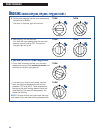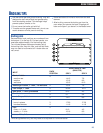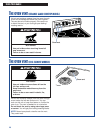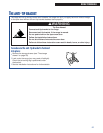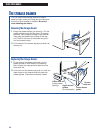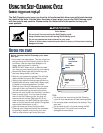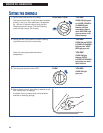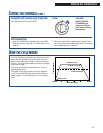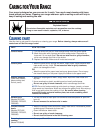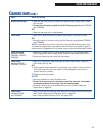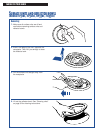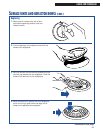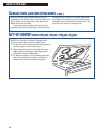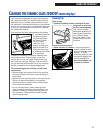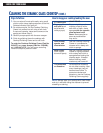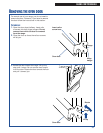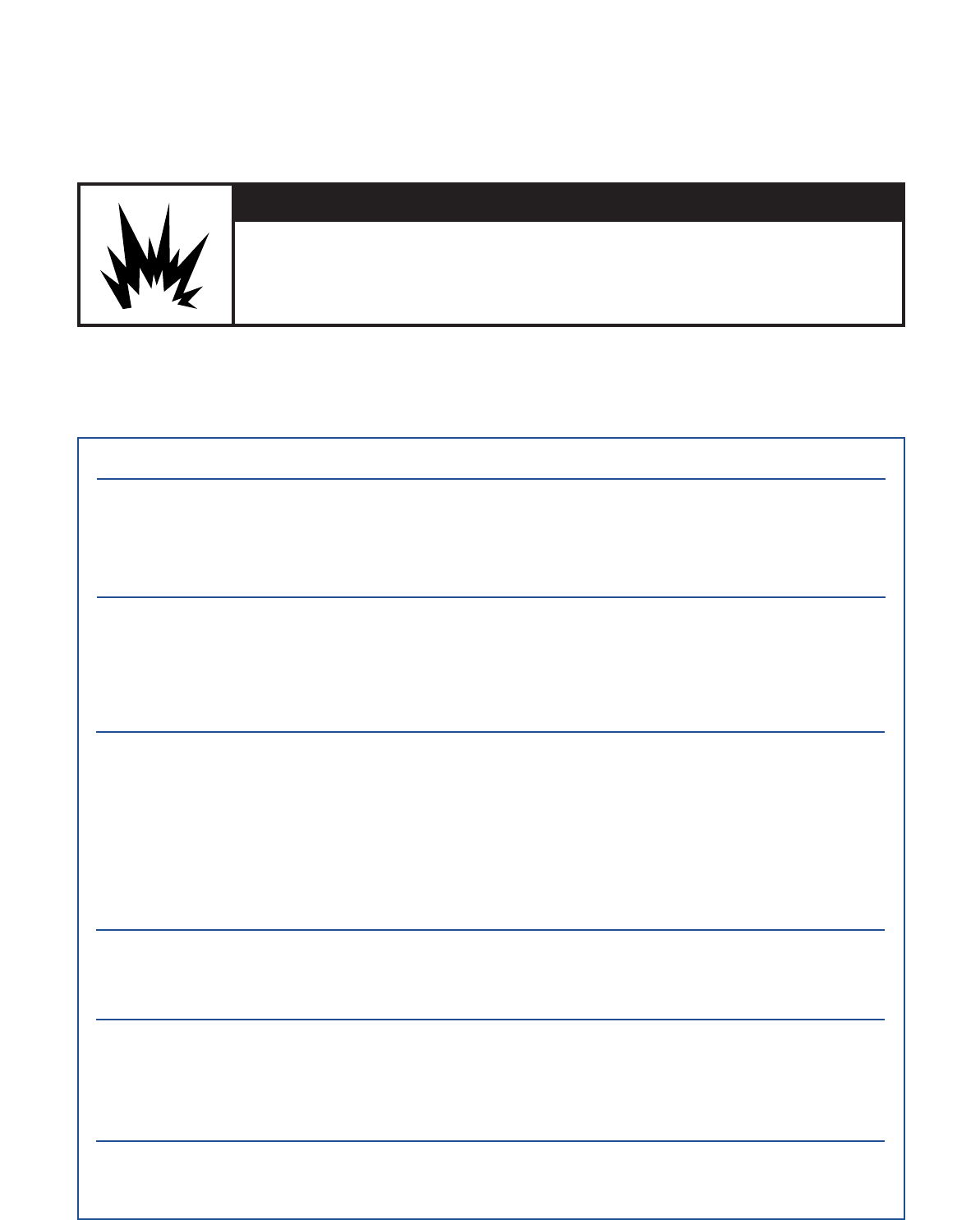
32
CARING FOR YOUR RANGE
Your range is designed so you can care for it easily. You can do most cleaning with items
found around your home. Cleaning your range whenever spills or soiling occurs will help to
keep it looking and working like new.
wWARNING
Explosion Hazard
Do not store flammable materials such as gasoline near the cooktop.
Doing so can result in death, explosion, fire, or burns.
CLEANING CHART
Use this chart to get specific information on cleaning your range. Before cleaning, always make sure all
controls are off and the range is cool.
PART
Control knobs
Control panel
Exterior surfaces
(other than ceramic
glass cooktop and
control panel)
Surface units
(Models FEP310E,
FEP320E, FEP330E,
FES330E)
Chrome reflector
bowls
(Models FEP310E,
FEP320E, FEP330E,
FES330E)
Ceramic glass
cooktop
(Model FES364E)
HOW TO CLEAN
1. Turn the knobs off and pull them straight away from the control panel.
2. Wash the knobs with a sponge and warm, soapy water. Rinse and dry
them well. Do not soak them. Do not use steel wool or gritty cleansers,
which can damage the finish of the knobs.
3. Replace the knobs. Make sure all knobs are turned off.
•
Wash the panel with a sponge and warm, soapy water. Wipe the panel with
clean water and dry it well. Do not use steel wool or gritty cleansers,
which can damage the finish.
OR
•
Wash the panel with a paper towel and spray glass cleaner. Do not spray
the cleaner directly on the panel. Apply the cleaner to the paper towel.
•
Wash with a sponge and warm, soapy water. Wipe with clean water and
dry well.
•
Use a nonabrasive, plastic scrubbing pad on heavily soiled areas.
•
Do not use gritty or harsh cleansers, which can damage the finish.
NOTE: Do not let foods containing acids (such as vinegar, tomato, or lemon
juice) remain on the surface. Acids may remove the glossy finish. Also wipe up
milk or egg spills when the cooktop is cool. Be careful when cleaning
around the model and serial number plate; too much scrubbing could
remove the numbers.
•
You do not have to clean open coil elements because spatters or spills will
burn off.
•
Do not immerse the surface units in water.
•
Wash the reflector bowls with warm, soapy water and a nonabrasive, plastic
scrubbing pad. Rinse and dry them well.
•
Clean the reflector bowls often.
•
Do not use gritty or harsh cleansers.
•
Do not clean the bowls in the Self-Cleaning oven.
•
See pages 37 and 38.



